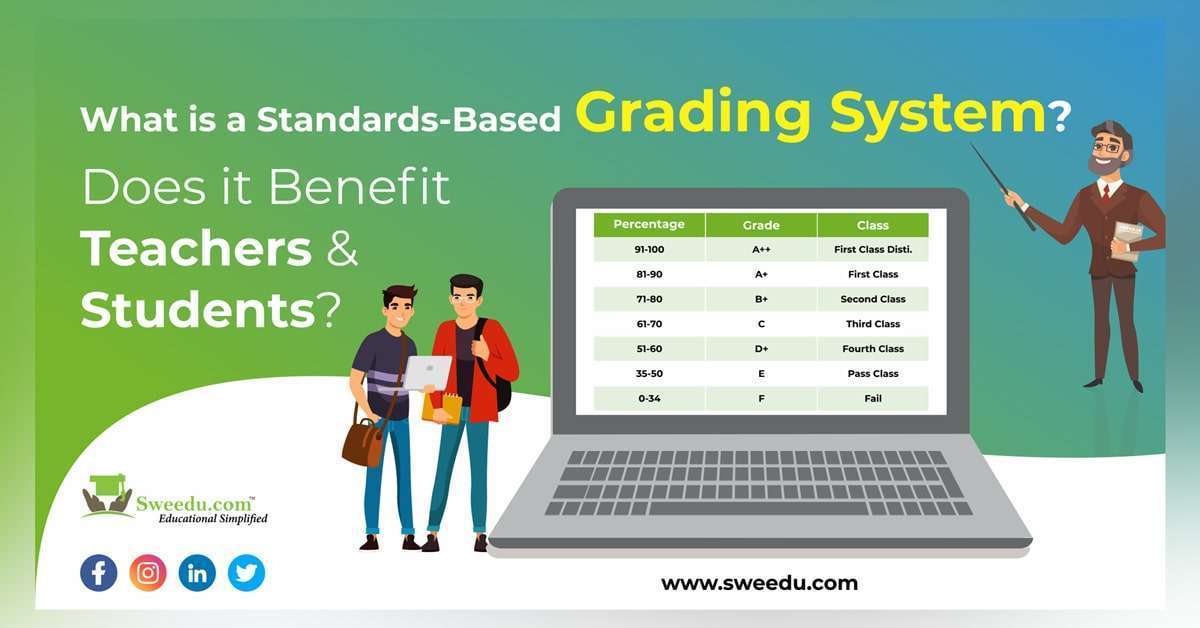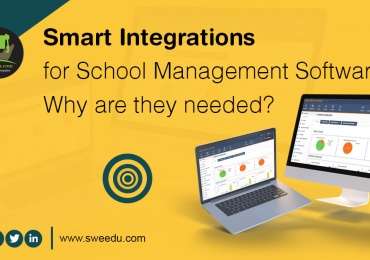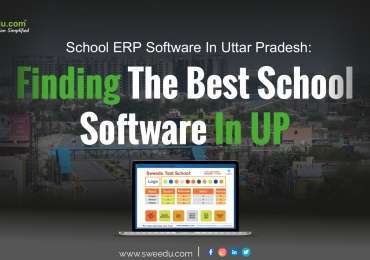
Grading assessments are unnerving.
Why?
Because the marks a student scores on a test are taken as an indicator of how smart they are, or how much they have learned which is not right. This is why educational institutions need to switch to a standards-based grading system.
The traditional grading approach only focuses on marks and goals, it does not measure a student’s learning progress. But standards-based grading focuses on learning progress rather than who gets the highest percentages.
What is a Standards Based Grading System?
A standards-based grading system is also known as a mastery-based grading system. It solely focuses on measuring a student’s understanding by setting learning targets and testing the demonstration of their learning, i.e. Standards.
The standards commonly range from ‘below requirement’ to ‘mastery’. These standards can change for better or for worse as per a student’s performance throughout the academic year. This grading system focuses on a student’s learning progress, making sure the educators, and parents can communicate about the student’s learning progress.
Instead of single letter grades and percentages that measure a single goal of whether a student passed or failed, standards-based grading measures learning progress, its growth and decline to help students.
Standards-Based Grading System vs. Traditional Grading System
Let’s discuss the differences between these two grading methods to understand which one is better suited for educational institutes.
Standards-Based Grading |
Traditional Grading System |
| Focuses on setting learning targets to assess students’ progress. | Relies heavily on set grades/percentages for assessments. |
| Students pass or fail based on the multiple assessment criterias given to them throughout the academic year. | Students pass or fail based on the percentage/grades they get in their overall assessments. |
| Students are given multiple opportunities to improve their learning mastery. Only the latest assessments are used for grading for accuracy. | Students are assessed holistically by assigning them a single grade at the end of the term, based on theoretical assessments, i.e. exams. |
| Students and parents can properly assess progress with details on their kid’s learning strengths and weaknesses. | Students & parents are left confused about the student’s performance since their performance is summed up in a single letter grade.
|
Why is Standards-Based Grading a Better Assessment Method?
Now you know what the standard grading system is and how it differs from the traditional grading method, let’s discuss why it’s a better assessment method.
-
- This grading system helps educators provide students with detailed feedback on their learning progress. This means students get clarity on the areas they have mastered, and the ones that need more work. With detailed feedback, students’ learning growth accelerates.
-
- In other assessments, students have difficulty understanding the grading system, making it hard for them to pinpoint their weak areas. With standards-based grades, students know where they went wrong and what needs more practice. This way they can also take ownership of their studies.
-
- Standards-based grading helps personalize learning for students. They can be assigned tasks and assignments that align with their mastery level rather than forcing them to work on what everyone else is working on.
-
- Instead of testing a student’s memory skills, this grading system works on challenging and testing their learning mastery, and how much they understand the concept.
How does the Standards-Based Grading System Benefit Students?
The standards-based grading is beneficial for students in all educational institutions. Why? Because of the benefits listed below.
-
- Students are more engaged and motivated to learn when they know their assessments are performance-based, instead of percentage based.
-
- When they know the assessment isn’t focused on marks but on mastering the concepts, they are motivated to study to understand rather than just memorizing it.
-
- A learning-based assessment is a shift towards understanding-based learning. This kind of practice isn’t just beneficial for studying but it also gives them a healthy approach to learning, be it for school or otherwise.
-
- In traditional classrooms, students don’t have control over their learning pace or level or have an idea regarding the areas they need to work on. In standard grading-based classrooms, students are an active part of their learning, tracking their progress, knowing which areas need more attention, and have the opportunity to act on them accordingly.
How does the Standards-Based Grading System Benefit Teachers/Educators?
Now that we have learned how this grading system benefits students, we move on to discussing its benefits for teachers/educators.
-
- When the grading system is focused on percentages rather than student progress, teachers’ focus is also fixated on holistic assessment rather than student progress. But here teachers focus on teaching rather than grading.
-
- Teachers work towards personalizing lessons to help students learn better, and improve their mastery of the subject. This personalized lesson planning is beneficial in improving the quality of education they provide.
-
- Focusing on learning mastery means more room to get creative with teaching methods and resources. This is something almost all teachers want, the chance to get creative with their teaching, and experiment with new learning methods in their classrooms.
-
- Here the teachers have an idea about their student’s learning level, the areas they excel at, and the ones that need more attention. This also means they can communicate with their student’s parents to give them accurate reports on their kid’s academic progress and performance
FAQ’s
1. What is standards-based assessment in education?
Standards-based assessment refers to the educational system where learning is assessed by demonstration of understanding, rather than a theoretical exam.
2. How does SBG work?
Standards-based grading (SBG) is where teachers grade a student’s work based on their performance and their demonstration of understanding by assigning it a mastery level.
3. How does standards-based grading help students?
This grading system provides students with an equitable learning environment. It gives them the resources to focus on not just learning but mastering the said topics, creating a more solid learning foundation.
EndNote
Standards-based grading creates a productive and motivational learning environment. It engages and encourages students to focus on mastering a subject, instead of just learning about it.
This grading system helps students and teachers pinpoint the areas of excellence, and ones that need more practice.
The standards-based grading system is very different from the traditional grading system in terms of assessment type, criteria, assessment tools, and more. But we know that traditional grading systems are not representative of a student’s learning progress.
Educational institutions need a new grading system for increased accuracy and management, but they also need a better management solution like SWEEDU ERP. But for now let’s focus on the former first.
Let’s recap why standards-based grading is a better assessment method.
- Offers a detailed feedback
- Students learn taking ownership of work
- Learning is personalized
- It tests learning mastery, not memory.
This grading system is a better alternative to the current one because of the benefits it provides to students and teachers in an educational institution.
Benefits for Students
- Better engagement and motivation to learn
- Develops a habit of understanding the concept rather than memorizing it
- Students can track their learning progress
Benefits for Teachers
- Teachers can personalize lesson plans as per the students’ mastery levels
- They can get creative with teaching methods
- They can provide a detailed progress report to the student’s parents
Although this grading system is the right one to switch to, the changes its implementation will bring a lot of changes to your education process
Thankfully, you can implement this in an easier way. How? With an Education ERP software of course.
Not only does the software help teachers with changing their student and lesson management processes online, but it also provides parents with a digital platform to access their children’s academic reports.
SWEEDU ERP Software is a must for all educational institutions to keep up with all the latest changes and development in the education industry. If you’re interested, start your free trial of our education management software, and experience technology like never before!
If you enjoyed reading this blog, don’t forget to share it on your social media with friends, family, and colleagues!
For more education-related content, check out our other blogs.
- Here the teachers have an idea about their student’s learning level, the areas they excel at, and the ones that need more attention. This also means they can communicate with their student’s parents to give them accurate reports on their kid’s academic progress and performance




